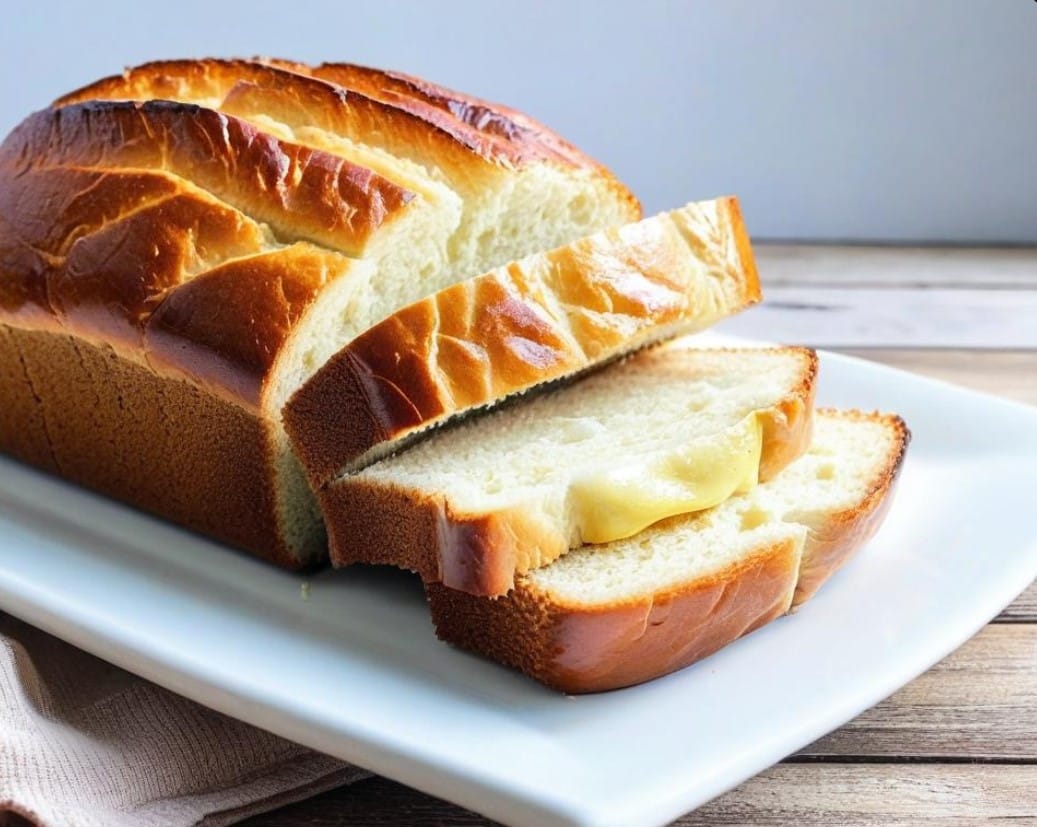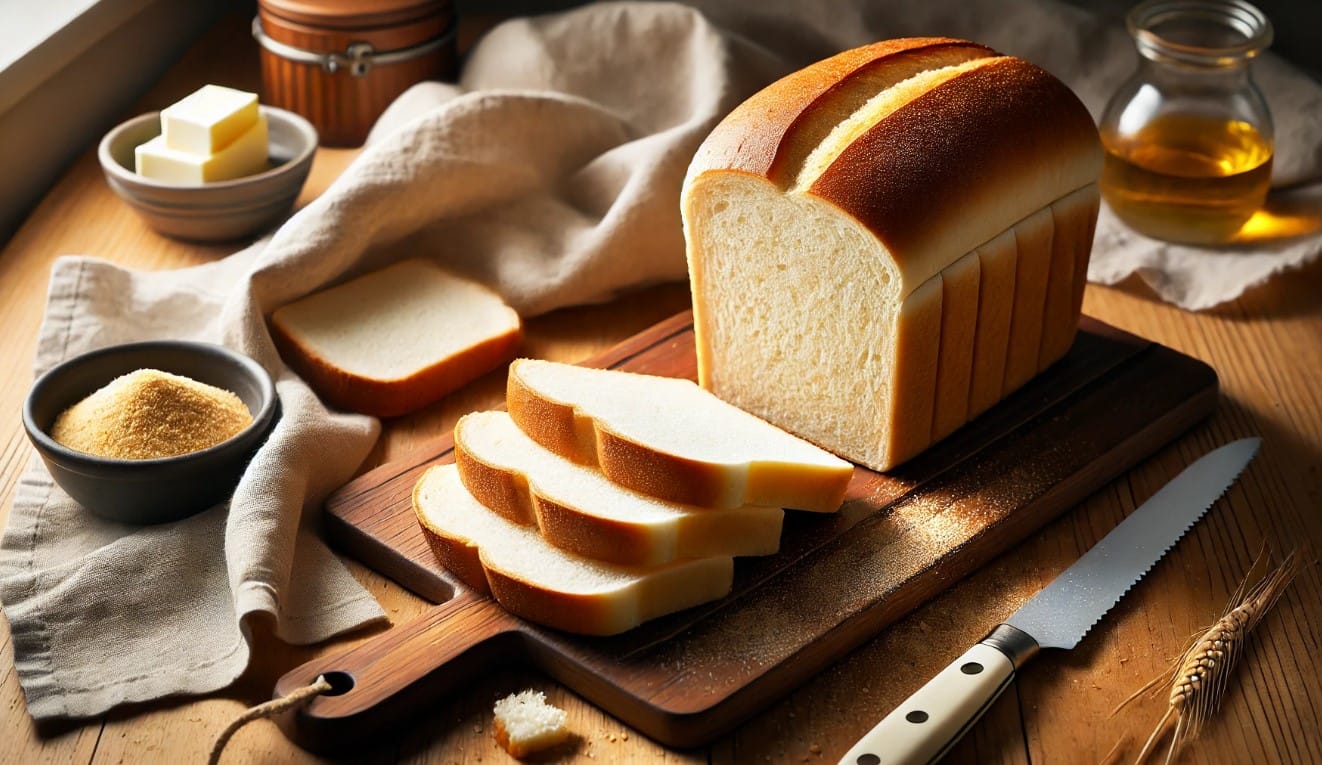Best Sandwich Bread Recipe
This sandwich bread recipe creates a perfectly soft and airy loaf with just the right hint of sweetness. It’s easy to make at home and free from preservatives. With its smooth texture, it’s perfect for sandwiches, toast, and everything in between. Whether you’re a beginner or an experienced baker, you’ll love the simplicity and flavor of this bread. Enjoy the warm, fresh aroma of homemade bread straight from your oven and savor each bite!
Why You’ll Love This Sandwich Bread Recipe
There’s something magical about homemade bread—the aroma that fills your kitchen, the soft crumb, and the satisfaction of knowing exactly what’s in every slice. This sandwich bread offers the perfect combination of softness and structure, making it ideal for sandwiches that won’t fall apart. You can also enjoy it toasted with butter or jam, or as the base for grilled cheese. Not only is it preservative-free, but the ingredients are simple and easy to find. Plus, this recipe gives you control over the flavor—swap out honey for sugar or add seeds for extra texture. With a few easy steps, you’ll have a bakery-quality loaf right from your own kitchen.
Related Pumpkin Recipes:
- Butternut Squash Soup Recipe: A Fall Favorite
- Pumpkin Scones with Maple Glaze Recipe
- Pumpkin Chocolate Chip Muffins Recipe
- The Best Spiced Pumpkin Waffles Recipe

Ingredients List of Sandwich Bread recipe
- 3 cups all-purpose flour (or bread flour for chewier bread)
- 2 ¼ tsp active dry yeast (equals one typical packet)
- 1 tbsp sugar (or substitute with honey for natural sweetness)
- 1 tsp salt
- 1 cup warm water (110°F/45°C)
- 2 tbsp unsalted butter, softened (or olive oil)
- Optional: ¼ cup milk (for a softer, richer crumb)
- Optional toppings: Sesame seeds, poppy seeds, or oats
Step-by-Step Instructions
- Activate the yeast by mixing it with warm water and sugar in a small bowl. Stir gently and let it sit for 5-10 minutes until it becomes frothy, which indicates that the yeast is active and ready to work. If it doesn’t foam, try again with fresh yeast.
- Whisk the dry ingredients together in a large bowl, combining the flour and salt evenly.Gradually add the yeast mixture, stirring until a shaggy dough forms. If using milk, add it along with the water. You can also incorporate the softened butter or olive oil at this stage.
- Knead the dough on a floured surface for about 8-10 minutes until it feels elastic. The dough should become smooth and elastic. If it feels too sticky, sprinkle in more flour a little at a time until it reaches the right consistency.
- First rise: Place the kneaded dough in a lightly oiled bowl, turning it once to coat the surface with oil. Cover with a damp cloth and let it rise in a warm spot for 1-2 hours or until it doubles in size.
- Deflate the dough gently by pressing it down after the first rise to release trapped air. Shape it into a log and place it in a greased 9×5-inch loaf pan, smoothing out the top.
- Second rise: Cover the loaf pan loosely with plastic wrap or a cloth. Let the dough rise again for 30-45 minutes, or until it reaches just above the rim of the pan. Meanwhile, preheat your oven to 350°F (175°C).
- Bake the bread: Bake the loaf for 30-35 minutes, or until the top is golden brown and the bread sounds hollow when tapped. If the top browns too quickly, cover it with foil for the last 10 minutes.
- Cool and slice: Remove the bread from the oven and let it cool for a few minutes in the pan. Transfer it to a wire rack to cool completely before slicing to ensure it maintains its structure.
Category, Cuisine, and Prep Details
- Category: Bread
- Cuisine: American
- Prep Time: 20 minutes
- Cook Time: 35 minutes
- Rising Time: 1 hour 45 minutes
- Total Time: 2 hours 40 minutes
- Servings: 10 slices
- Difficulty: Easy
Nutritional Information (Per Slice)
- Calories: 150
- Protein: 4g
- Fat: 3g
- Carbohydrates: 26g
- Fiber: 1g
Health Benefits of Sandwich Bread
Homemade sandwich bread offers several health advantages over store-bought versions. Since it contains no preservatives or additives, it’s a cleaner option for those looking to avoid unnecessary chemicals. You can also customize the ingredients by using whole wheat flour for added fiber or reducing sugar for a lower glycemic impact. Adding seeds like flax or chia boosts omega-3s and antioxidants. Homemade bread tends to be lower in sodium, which benefits heart health. Baking your own bread also allows for portion control, helping to maintain balanced nutrition in your daily meals.
FAQs:
1. Can I freeze sandwich bread?
Yes, you can freeze the bread! Slice it first and place the slices in a freezer-safe bag. Thaw the bread slices by letting them sit at room temperature or warming them in a toaster.
2. What flour works best for sandwich bread?
All-purpose flour works well, but bread flour gives the loaf more structure and chewiness. Whole wheat flour can also be used, but the bread will be denser.
3. How to tell if the dough is ready to bake?
A good way to check is with the “poke test”—press a finger lightly into the dough. If the indent stays, the dough is ready to bake.
Cooking Tips : Sandwich Bread Recipe
- Use a thermometer to check the water temperature. as very hot water can kill yeast, and cold water won’t activate it.
- For an even softer crust, brush the top of the loaf with melted butter as soon as it comes out of the oven.
- Add seeds, herbs, or spices to the dough to customize the flavor to your liking.
- To prevent the dough from sticking to the bowl, lightly oil the bowl before placing the dough in it.
- If your oven runs hot, reduce the temperature slightly or cover the bread with foil during the last 10 minutes.
Conclusion
Baking sandwich bread at home is a rewarding experience that offers freshness, flavor, and control over ingredients. This bread is perfect for all your sandwich needs, from classic PB&Js to gourmet turkey melts. It’s also delicious as morning toast or simply enjoyed with a slather of butter. Give it a try, and you’ll never go back to store-bought bread again!

